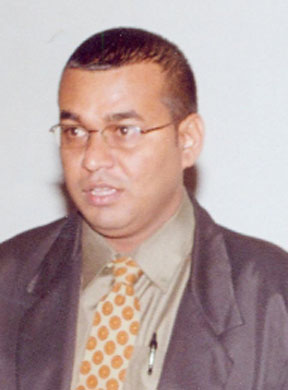Guyana could clear a critical hurdle to major commercial bank lending and large scale private sector investment in the country’s agriculture sector if proposals submitted by the government to the Caribbean Catastro-phe Risk Management Facility (CCRIF) for endorsement of a countrywide excess rainfall crop insurance model for Guyana secure the facility’s promised year-end approval, Agriculture Minister Robert Persaud told Stabroek Business in an interview earlier this week.
CCRIF is a Caribbean-owned risk insurance facility established with funding from the Government of Japan and support from the World Bank following region-wide devastation from natural disasters in 2004. CCRIF, the world’s first regional disaster insurance facility provides participating governments with immediately liquidity if hit by a hurricane or earthquake. “We have argued that a Caribbean entity of this type should also be looking at floods and we have been able to make [the argument] that whatever risk management facility exists for the region ought to take account of floods. CCRIF have bought into this and we have worked with them to develop a model for Guyana. The model has been submitted and they have given us a timetable of the end of this year,” Persaud told Stabroek Business. Asked whether he expected the timetable given by CCRIF would be met Persaud said, “that was their commitment to us”.

CCRIF’s approval of Guyana’s excess rainfall insurance model which seeks to extend its coverage to floods is likely to boost the efforts of the Government of Guyana to woo both the banking sector and the big players in the country’s business community into significantly increasing their investments in the country’s agricultural sector.
Meanwhile, Persaud told Stabroek Business that while there is evidence of increased private sector interest in investing in the country’s agricultural sector, local businessmen still need to be bolder, “more willing to take risk.
“Today, perhaps more than before, there is a willingness on the part of the local private sector, especially the big players, to be interested in agriculture. This has come about because the private sector recognizes that agriculture is good business for them and secondly, because they too have recognized how important agriculture will be in the future.”
According to the Agriculture Minister the prevailing enthusiasm in the business community for investing in agriculture represents a response to a case which government has been making. He said statistics available at the Guyana Office for Investment indicate the more and more businesses, both big and small, are coming on board. These, he said include businesses which are involved in the restaurant and food processing sectors whose interest in agriculture derives from a concern with “vertical integration.”
Persaud named several leading local manufacturing entities including Demerara Distillers Ltd, Banks DIH Ltd, Sterling Products and the Beharry Group of Companies which are involved in food processing and are pursuing an interest in agriculture, out of a concern with vertical integration. “These companies now have an interest in agriculture at the production end as well as at the processing end,” Persaud said.
Additionally, the minister cited the investment by Neal and Massy in an experimental model farm at Mon Repos and which has now been handed over to the National Agricultural Research Institute (NARI) as “yet another positive indication” of private sector interest in agriculture. “Here is a company that was willing to put millions of dollars into an experiment designed to show local farmers how to run a modern farm,” Persaud said.
Initiatives by government to create a heightened level of private sector interest in large-scale agricultural production have been inhibited by investor concerns over the vulnerability of the sector to weather-related crop damage. This concern has heightened in the wake of increasingly erratic weather patterns resulting from climate change. Traditional reluctance on the part of the country’s leading entrepreneurs to undertake the kinds of large-scale investments in agriculture that could consolidate local food security and significantly enhance the country’s export potential has not been helped by oft-expressed concerns on the part of local commercial banks and insurance companies to finance and underwrite what they regard as a risky sector. “Our primary focus is on getting CCRIF off the ground. We believe that this is the low hanging fruit in having some risk management. We feel too that it will imbue greater confidence in the local private sector in terms of investing in the agriculture sector,” Persaud said.
Risk insurance aside, Persaud said government was also concerned with the pursuit of a broader policy of risk management including the creation of a system of preventative infrastructure. “Prevention of risk can sometimes be more important than risk insurance and what we have tried to do is to look at risk management from the front end, that is to say from the preventative standpoint. This involves looking at how we can adjust our drainage and irrigation system, looking at the technologies that we can roll out; looking at building capacities with farmers, working closely with investors and improving our extension services and otherwise modernizing the sector. We believe that if you have intelligent farming it allows you to manage risk more effectively. You can have the best insurance instrument but if you are not able to do things in a manner that prevents problems, it makes the whole effort counterproductive. For us, risk management takes on a holistic approach,” Persaud told Stabroek Business.
Apart from the CCRIF excess rainfall proposal, Persaud said, government was also examining proposals for insurance at the farm level in rice and other sectors. He disclosed that the Ministry of Agriculture had already “done some technical work” with the World Bank and a Canadian firm through IIACA. He said that documents prepared out of this exercise had been shared with the Insurance Association of Guyana and that the association had signalled its interest, “in writing,” in the information provided. He said that the process had been taken as far as discussions with the local insurance companies and the Ministry of Finance in order to create the financial instruments for such a programme.

